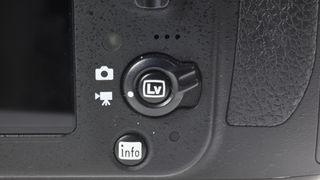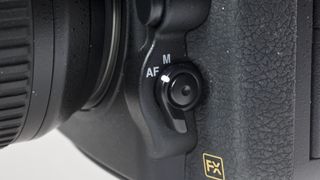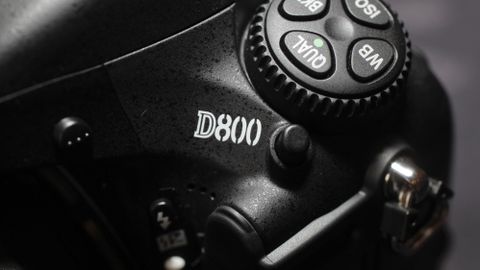Why you can trust TechRadar
In terms of size, shape and weight, the differences between the D800 and D700 are subtle. It's 10% lighter than the D700 and the body has a more 'contoured' look and feel. Like the D4, the shutter release has been slightly repositioned for better ergonomics, while a number of the controls have been tweaked.

There's a new video record button near the shutter release and a new switch to the right of the rear screen that enables you to toggle between stills and video live view. While it is possible to capture a still image when the Stills/Video switch is set to Video, video recording can only be started when the switch is at Video. These controls are mirrored on the D4, which should make switching between the two bodies a relatively straightforward process for pros with both cameras.

Just to the left of the lens mount is a focus mode control switch and button, as on the D7000 in Nikon's DX SLR line-up, this is used in conjunction with the camera's two control dials. Rotating the rear dial enables switching between Single AF (AF-S) and Continuous AF (AF-C), while the front dial can be used to toggle between the AF point selection options available in each mode.

Although it may be surprising to hear that such a video-focused camera doesn't come with an articulating screen, the D800's fixed 921,000-dot 3.2 inch LCD panel is very good. As with the D4, it features automatic monitor brightness control and during our testing, we found it provides a clear view of images. Reflections aren't a major issue, but they are more noticeable with the D800 than on the Canon 5D Mark III's screen.
While the D700's viewfinder offers 95% frame coverage, the D800's gives a 100% view, which is especially useful when there is no time or opportunity to crop images before they are published. A dual-axis electronic virtual horizon is also a useful addition for outdoor photographers. This can be viewed either on the LCD monitor or through the viewfinder, and it continues to be displayed, even when the shutter release is half depressed.

Anyone familiar with Nikon SLRs, especially the D700, or D3 S/X professional series, will be at ease with the menu and operation of the camera. There are no major changes other than the addition of video recording options and the change to the D7000-style focus mode switch and button.
While the AF system is advanced and there are lots of AF-point selection modes available when shooting continuously, the options are made very clear in the viewfinder and in the top-plate LCD, so it's easy to select the one you want. However, it's about time that the AF points were spread a bit further across the frame and not clustered within the DX crop area.

